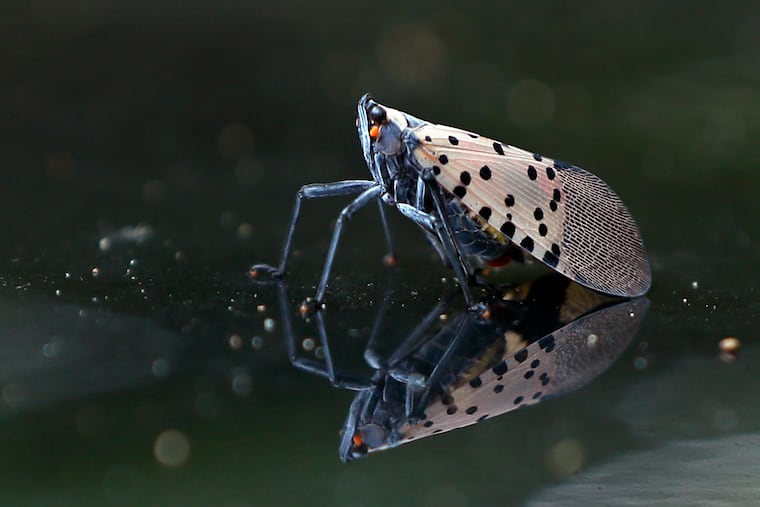Republicans and Democrats in Congress are rallying around this one issue. Stopping the spotted lanternfly.
A coalition of U.S. senators and representatives, including two Republicans, wants to ensure the National Institute of Food and Agriculture makes spotted lanternfly research a priority.

The spotted lanternfly, the bane of trees and a source of frustration for scientists and homeowners alike, is becoming something else: a political unifier.
Bills introduced in the U.S. House and Senate this week to fund research into controlling lanternflies drew bipartisan support, including Pennsylvania’s two Democrat senators, John Fetterman and Bob Casey, and J.D. Vance, Ohio’s new Republican senator. The bills would allow the secretary of agriculture to issue competitive grants for research projects to find creative ways to control the pests.
In Pennsylvania, Casey said in a statement, the spotted lanternfly has threatened the livelihood of “farmers and forest landowners who have lost crops and revenue to the invasive species, and the communities across Pennsylvania that depend on them.”
Lanternflies, a species native to China, excrete a “honeydew” substance that attracts sooty mold and if enough of it accrues, it can limit a tree or plant’s photosynthesis, weakening the structure. Particularly susceptible are the tree of heaven, black walnut saplings, and grapevines, which can be killed by the mold.
The stakes of letting this invasive species get plump on plant sap are especially high in the Keystone State. It was the first state in the country to detect the species in 2014. Since that first encounter, the lanternfly has been found in 51 of the 67 counties, accounting for $50 million in annual damage as of 2020, according to researchers. Fetterman noted that they already have wreaked havoc on Pennsylvania’s grapevines, apples, peaches, and hops.
Researchers at Pennsylvania State University have warned that the damage could balloon to $324 million annually and translate to a loss of more than 2,800 jobs if the threat spreads across the entire state.
» READ MORE: Spotted lanternfly could cost Pennsylvania $324 million a year, Penn State study finds
There have been some advances in eradication efforts, such as the robot that can catch lanternfly eggs and dogs trained to do the same, but the pests inch forward.
Meanwhile, grassroots efforts to battle the bugs have met with little success. Facebook groups of self-proclaimed “backyard warriors” formed exclusively with the goal of eradicating the plant-hopper. Regular citizens turned scientists shared their tips and tricks for swatting the red, black, and white-winged menaces and scraping their sacks of eggs. People made jewelry out of the pest’s delicate bodies and even gave New Yorkers advice when the plague finally reached their concrete jungle.
Counties reminded drivers to check their cars for stowaways, which is one of the ways lanternflies made their way across states. It was not unusual to whisper “kill it” to an uninitiated observer photographing what they viewed as a beautiful bit of nature.
The spotted lanternfly is not just a Pennsylvania problem. East Coast and Rust Belt states, including neighbors Delaware, New Jersey, Ohio, Maryland, and New York, struggle with the infestation.
Rep. Chrissy Houlahan, a Democrat who represents Chester County and southeastern Berks County, spoke about the harm the pest has caused to her district’s brewers and winemakers in a statement about the lanternfly legislation she cosponsored in the House.
The Department of Agriculture distributed $17.1 million in FY2022 funding to 13 states for containment efforts and $8 million more for other lanternfly program activities.
Houlahan and fellow cosponsor Mike Kelly (R., Pennsylvania) have been sounding the alarm on the lanternfly for years. They were among 16 lawmakers who signed off on a letter to the secretary of the U.S. Department of Agriculture in 2021 asking the department to request additional funding for programs working to mitigate the pest for FY2022. Last year, a similar written plea went out with almost three times the signatures.